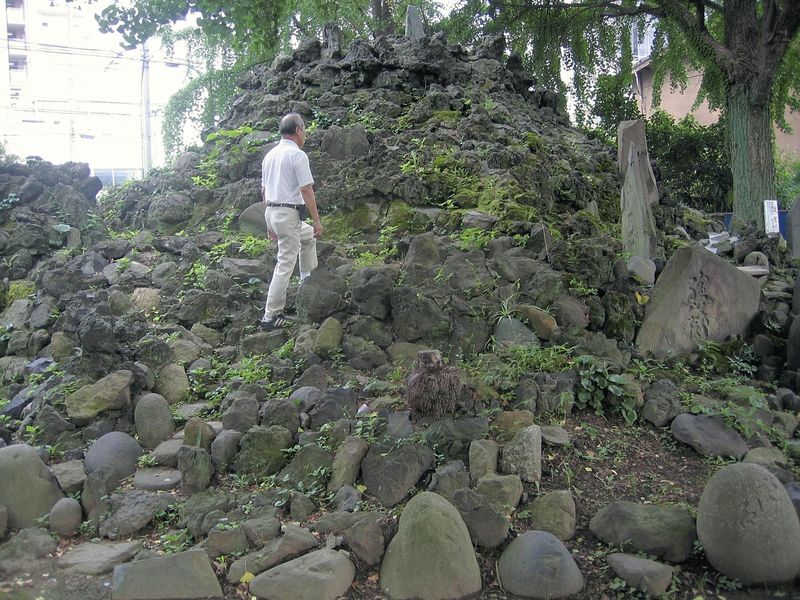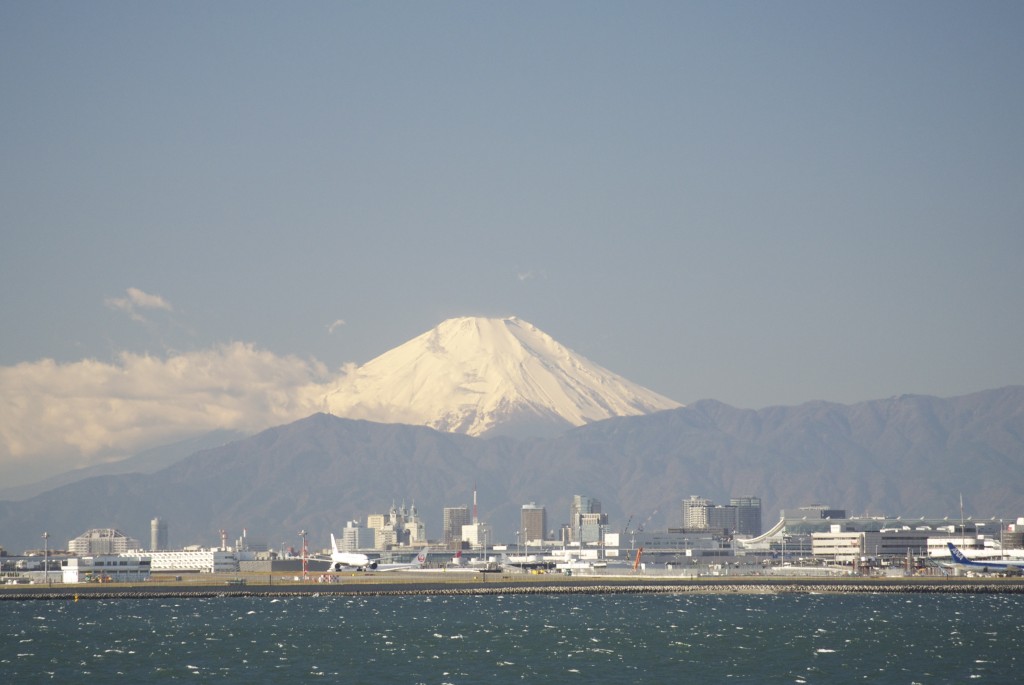
One of the many mini-Fujis– 50 in Tokyo alone (photo courtesy Yomiuri)
Hoofing it to sacred fujizuka
Hitoshi Ono / Yomiuri Shimbun Staff Writer Sept, 13, 2013
Is it too much of a hassle for you to climb Mt. Fuji? Local fujizuka, or small, man-made hills found mainly in the Kanto region, offer a charming and less physically taxing alternative.
With this year’s designation of Mt. Fuji as a UNESCO World Heritage site, fujizuka have seen an increase in visits by people who want to deepen their understanding of the sacred mountain.
Ordinary people began worshipping Mt. Fuji during the Edo period (1603-1867). At that time, local fujizuka were created one after another for the benefit of those who could not go to pray at the 3,776-meter-high mountain. They were usually built near residential areas, such as on the grounds of a shrine, at heights of up to several dozen meters.
A typical fujizuka comprises a mound of earth decorated with stones and a path that leads to a small shrine on top. Rocks are placed and small “caverns” are made to give the mound the appearance of Mt. Fuji.
Hatomori-Hachiman Shrine in Shibuya Ward, Tokyo, is home to the Sendagaya fujizuka, which was built in 1789. Visitors can climb the 6-meter-high hill all year round by way of a path, called ochudo, that winds almost entirely around the hillside.
This authentic fujizuka has a cave in which a stone statue is enshrined. It takes only a few minutes to reach the top, and the summit is covered with lava rocks that are believed to have been brought from Mt. Fuji.
Shunji Hirano, the shrine’s head priest, said recently there have been more young female visitors, as well as older men. Since three years ago, the shrine has sold a memorial certificate for ¥300 to those who ascend the fujizuka.
A 34-year-old female company employee from Tokyo visiting the shrine said Mt. Fuji’s heritage designation prompted her visit. “Mt. Fuji was registered as a World Heritage site. I came here to commemorate that,” she said. “In fact, I was overwhelmed by the steep path. I felt like I climbed part of Mt. Fuji.”
The surface of “Sunamachi Fuji” in Tomigaoka Hachimangu shrine in Koto Ward, Tokyo, is covered with rocks, giving the grounds a solemn, reverent atmosphere.
There are about 50 fujizuka spread around Tokyo’s 23 wards, and 300 in the Kanto region, according to Yoko Arisaka, an artist and author of “Furukute Atarashii Oedo Power Spot: Fujizuka Yurusanpo” (Old yet new spiritual sites in Tokyo: Strolling around fujizuka).
“People are showing greater interest in fujizuka as a casual sightseeing spot in their area. The boom in popularity will be a good chance to spread the culture of Mt. Fuji,” Arisaka said.
Some local governments promote their respective region’s fujizuka. Several in Nerima Ward, Tokyo, are open all year round. The ward’s tourist center hands out free pamphlets explaining the area’s fujizuka, and a tourist association posted a special section on the sites on its website in July.
From Sept. 14 to Nov. 4, Shinjuku Historical Museum, near Tokyo’s Yotsuya-Sanchome Station, will hold a special exhibition of Shinjuku Ward’s cultural assets. The exhibition will feature the Mt. Fuji worship group Fujiko, and show related videos and display panels of the group climbing the mountain.
Not all fujizuka are open all the time, while others are roped off. It is best to check with shrines and local governments before visiting. Some fujizuka are quite rocky, so climbers should wear proper climbing shoes.

The real Fuji is only accessible for a couple of months in June and July. The rest of the year ascending the mini-Fuji's may have to suffice

The fujizuka of Tokyo played an important role in the modern Shinto revelation, Hitsuki Shinji. I wish I were in Tokyo so that I could learn more about the Fujikou! Here’s more information about the lecture:
http://www.regasu-shinjuku.or.jp/?p=53448